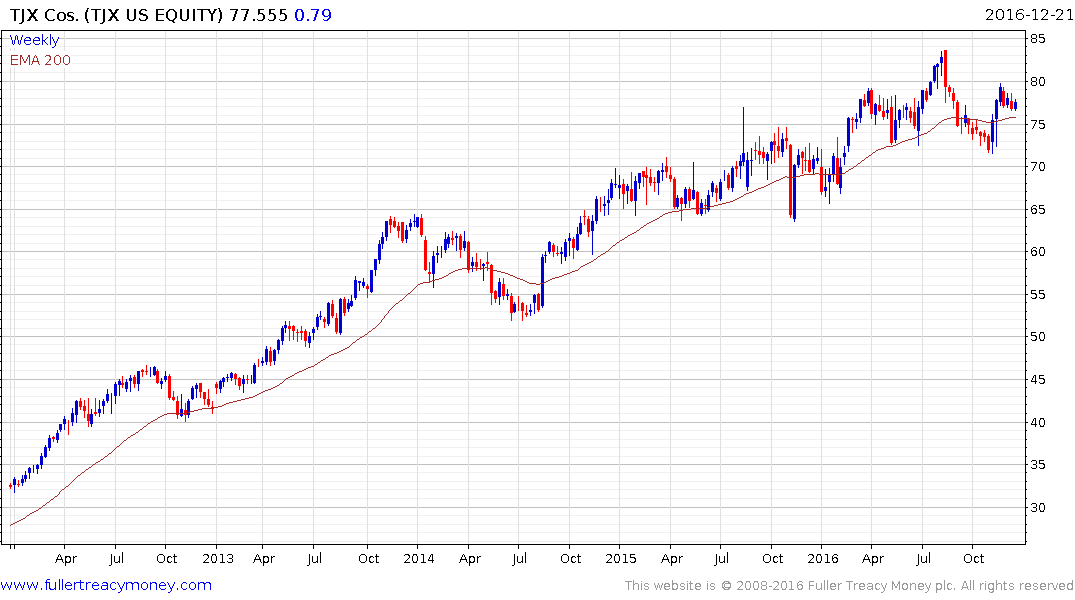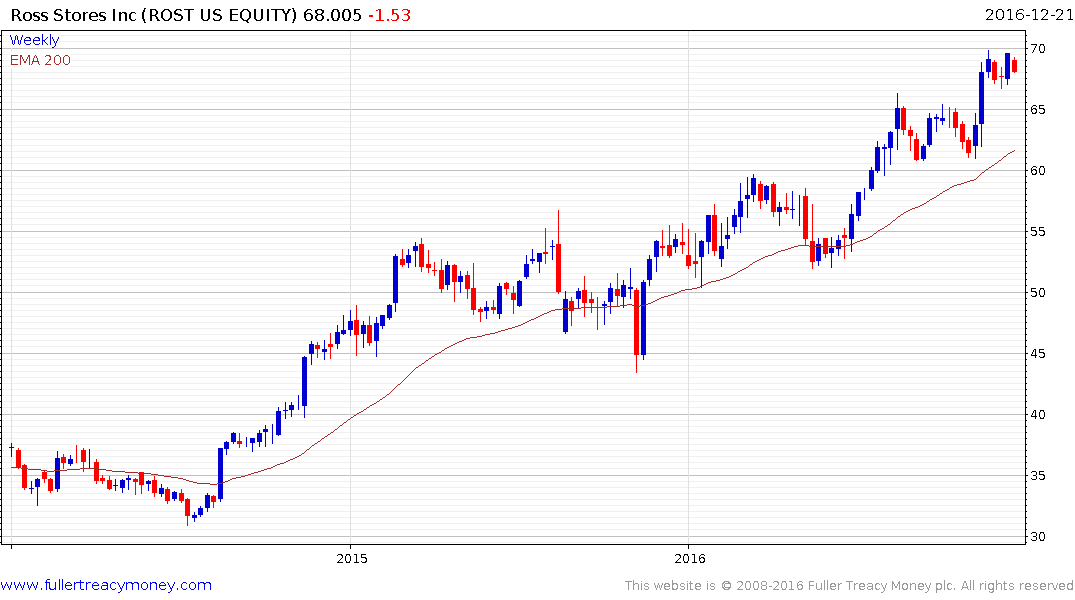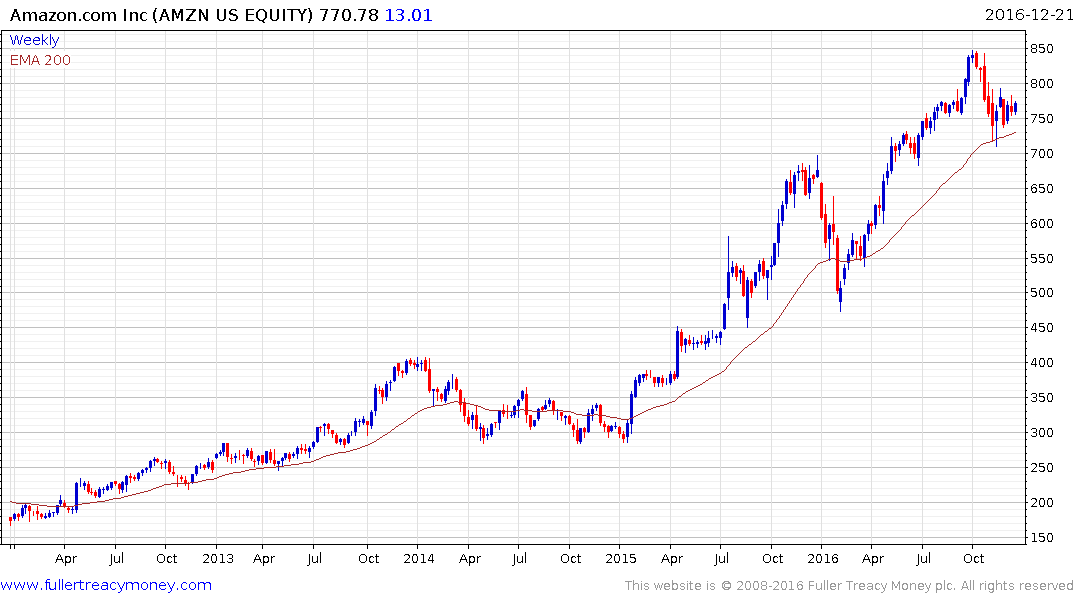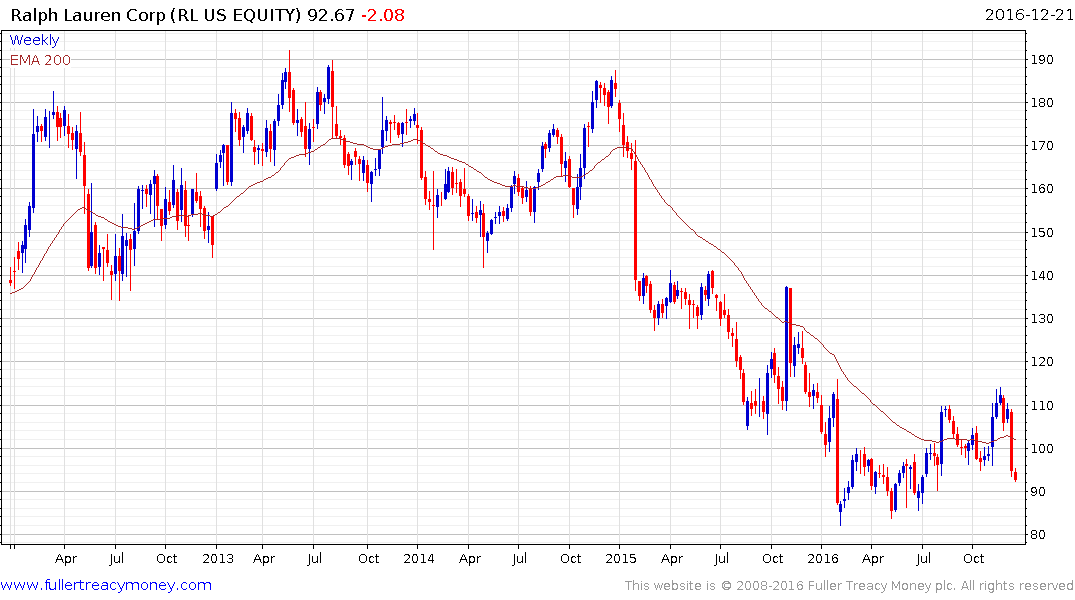How One Huge American Retailer Ignored the Internet and Won
This article by Kim Bhasin and Lindsey Rupp for Bloomberg may be of interest to subscribers. Here is a section:
But don’t expect a trend heading back in time. This is a difficult system to replicate, said Simeon Siegel, an analyst at Instinet. TJX boasts a wide net of inventory buyers who find small batches of desirable clothing, then make a small bet on those goods. This is unlike the traditional department store model, where buyers look at runway trends and make large orders of a few items, hoping that they’ll be the winner for the season.
“You’re buying closed-out product and you’re buying samples,” said Siegel. “You have to be very attuned to the numbers and very attuned to the fashion. The vendor base that you need to be plugged into and the intelligence that goes into buying the product is the most important asset they have. You need to find the most compelling stuff.”
When stores like T.J. Maxx do it right, they leave their shoppers filled with feelings of adventure and serendipity, says Jordan Rost, vice president of consumer insights at Nielsen, a research firm. Even an unsuccessful trip to a discount store can reinforce the thrill of the hunt. The instincts driving customers into parking lots is similar to those shopping online, Rost says. They’re searching for deals and the best item to fill some broad want or need without a target in mind.
As shoppers across generations and demographics become more focused on value than ever before, the excitement of finding something on sale has an even broader appeal. Millennials who grew up relying on e-commerce for all their needs are coming through the doors, too.
“Younger consumers are really open to that kind of open- minded approach to shopping, not necessarily coming in with a specific brand or product in mind,” says Rost. “Discovery is part of the experience.”
Retail is anything but simple however there would appear to be three primary business models. A business can compete on price, convenience or exclusivity. Amazon has mastered convenience, TJX competes on price while luxury brands offer exclusivity. In an increasingly connected world it is possible for all three business models to survive but it is hard to excel at more than one.

TJX has lost momentum over the last couple of years but has sustained the medium-term upward bias. A large downside weekly key reversal is evident at the August peak and the price will need to hold the $70 area if potential for additional upside is to continue to be given the benefit of the doubt.

Ross Stores has a more consistent chart pattern potentially because it is unencumbered by overseas sales and the strength of the Dollar. It is susceptible to mean reversion following a particularly strong performance since early November but a break in the medium-term progression of higher reaction lows would be required to question potential for additional upside.

Amazon experienced a steep reversionary pullback in October but found at least near-term support in the region of the trend mean and continues to consolidate above it.

Meanwhile European luxury goods manufacturers appear to have turned a corner with the strength of the Dollar lending a tailwind. However US brands like Ralph Lauren are struggling. The share fell this week to break a progression of higher reaction lows evident since January.


